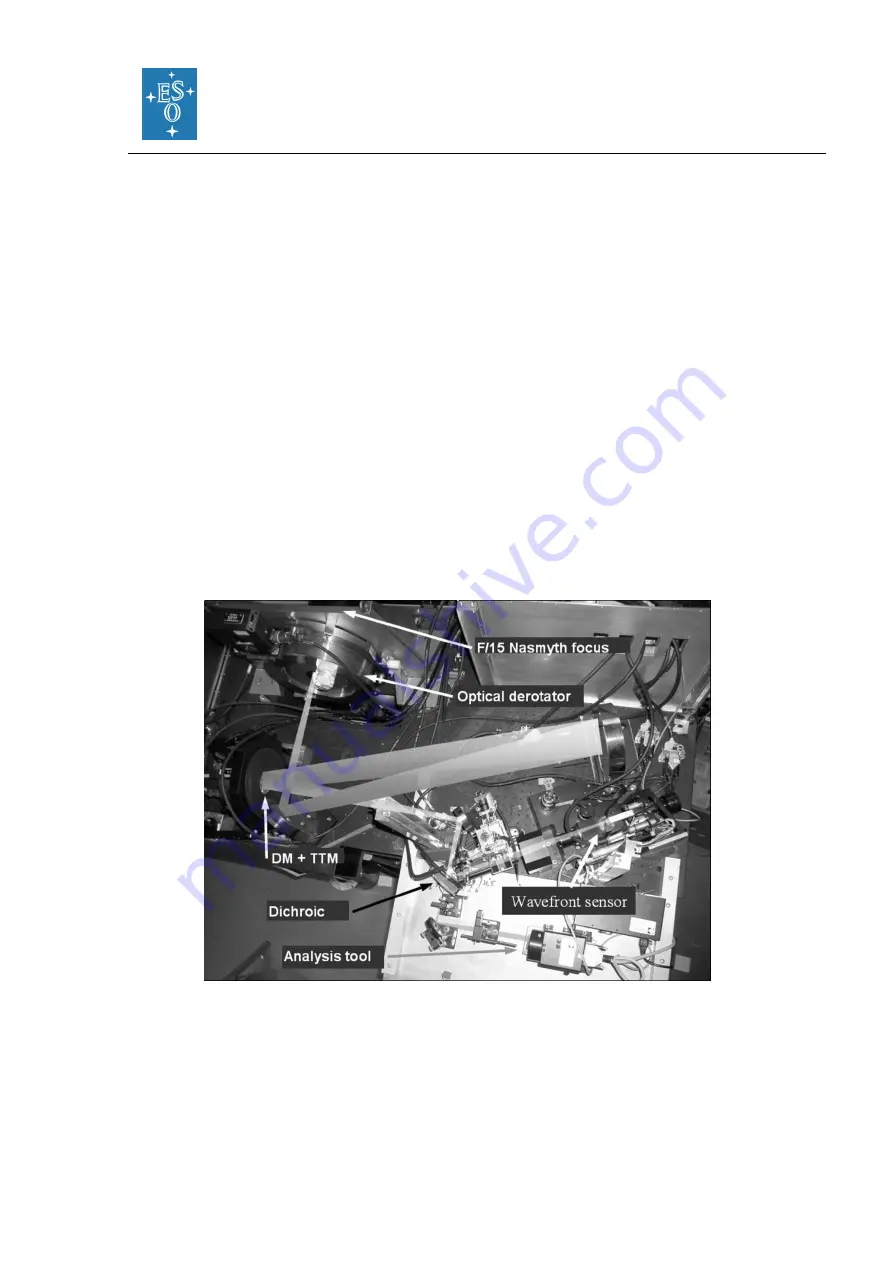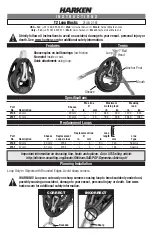
User Manual
Doc. Number: ESO-323064
Doc. Version: 2
Released on:
Page:
20 of 82
Document Classification: Public
The performance of an AO system is related to the number of lenslets in the lenslet array,
the number of actuators behind the DM, and the rate at which WF errors can be measured,
processed and corrected (the server-loop bandwidth).
The performance of an AO system is also linked to the observing conditions. The most
important parameters are the seeing, the coherence time, the brightness of the reference
source used for WFS and the distance between the reference source and the object of
interest. In case of good conditions
(i.e., seeing < 0.8” and coherence time > 3ms)
and a
bright (i.e., R< 7), nearby (i.e., within ~5
“)
reference source, the correction is good, and the
resulting point spread function (PSF) is very close to the di
ff
raction limit. A good correction
in the K-band typically corresponds to a SR larger than 30%. At shorter wavelengths
(particularly in the J-band) or in the case of poor conditions or a faint, distant reference
source, the correction is only partial - the SR may only be a few percent
3.2.2 MACAO Hardware Description
The MACAO system for CRIRES is based on a 60-actuator deformable mirror, inserted in
a so-called relay optics. These optics and the wavefront sensor optics are mounted on a
bread-board located between the Nasmyth focus and the spectrometer. It is about 1.5m
wide and a top view of the warm optics overlaid by the optical path is shown in Figure 11,
the assembly of the deformable mirror is displayed in Figure 12 .
Figure 11: Top view of the warm optics of the MACAO-CRIRES system. From f/15 Nasmyth
focus and after the optical derotator, one notices the deformable mirror and the tip-tilt mount
assembly. Light enters from the dichroic to the cold and warm part of the instrument. On the
right the wavefront sensor and some analysis tools are visible.
















































